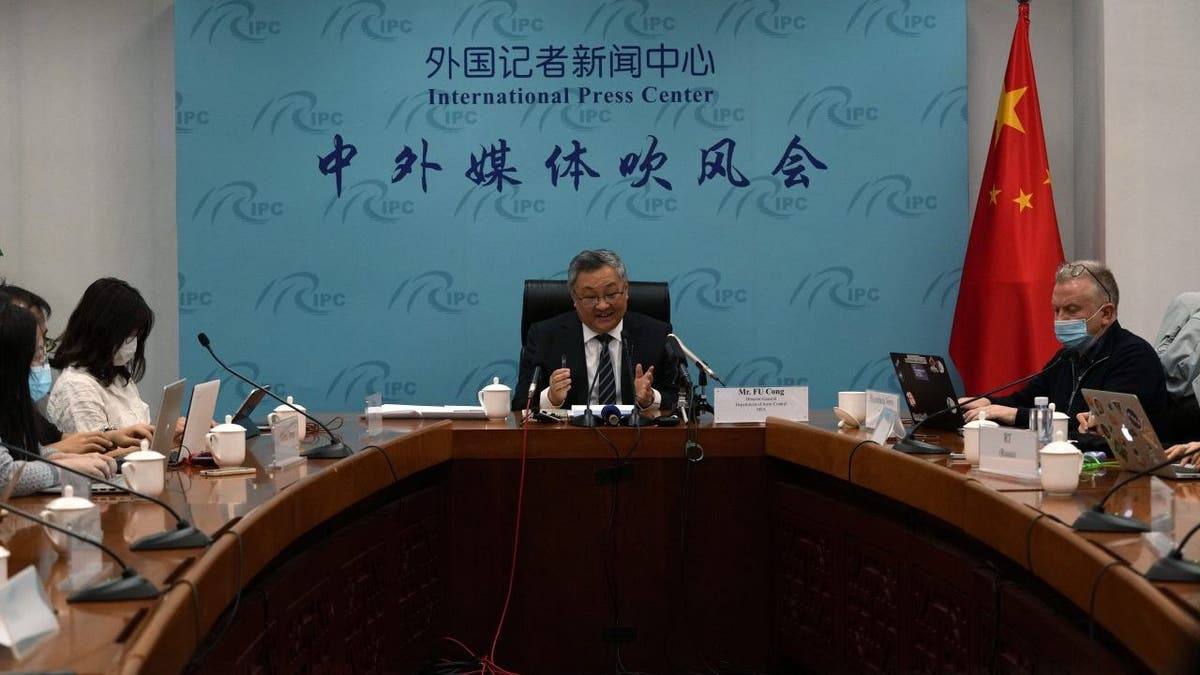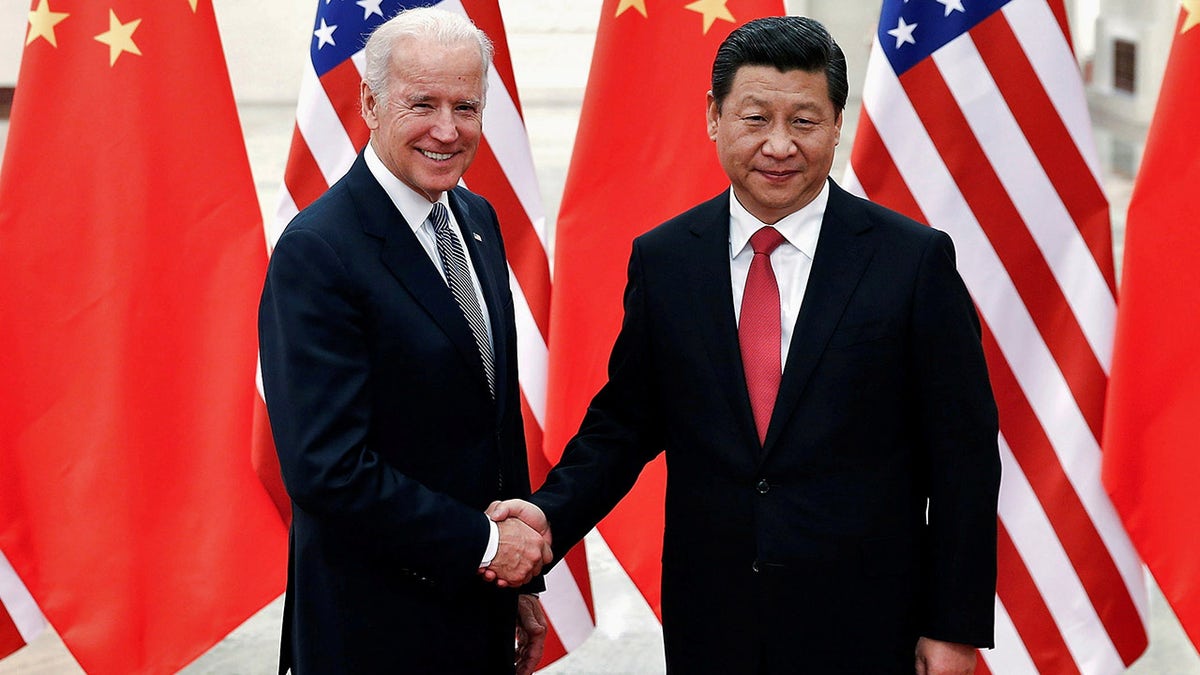Hoffman on Blinken saying Iran could develop nuclear weapon in weeks: 'Major issue for US national security'
Fox News contributor Dan Hoffman joined 'Fox & Friends First' to discuss Putin's nuclear threat amid the war in Ukraine and the status of Iran's nuclear program.
China’s nuclear ambitions may lead to a tripolar landscape and further proliferation as it seeks to place itself equal to the U.S. and Russia.
"It's one thing to have a kind of bilateral nuclear superpowers know the world as it is now, but headed towards a trilateral, trilateral situation the potential for accidents and miscalculations just naturally grows," James Anderson, acting Under Secretary of Defense for Policy under President Trump, told Fox News Digital. "And that's unfortunate."
The international landscape has remained in a bipolar dynamic between the U.S. and Russia as the two dominant powers due to a policy of mutually assured destruction (MAD) thanks to their virtually unmatched nuclear arsenals. That power balance has remained in place for over 70 years.

Fu Cong, center, the director general of the Foreign Ministry's arms control department, attends a press conference on nuclear arms control in Beijing, China, Tuesday, Jan. 4, 2022. The top Chinese arms control official denied Tuesday that his government is rapidly expanding its nuclear arsenal, though he said it is taking steps to ensure its nuclear deterrent remains viable in a changing security environment. (AP Photo/Ng Han Guan) (AP Photo/Ng Han Guan)
However, China has recently invested far more heavily in its nuclear arsenal and capabilities, developing a wide array of nuclear weapons in its land, sea and air-based delivery platforms that aim to bring it up to that same level as the U.S. and Russia. John Kirby in Nov. 2021 said the Pentagon’s "number one pacing challenge is the People’s Republic of China."
In 2020, the Pentagon estimated China possesses an arsenal in the "low-200s," but that number is set to "at least double" over the next decade. A report from the Pentagon last year claimed that China "likely intends to have at least 1,000 warheads by 2030, exceeding the pace and size the [Defense Dept.] projected in 2020."
Should China achieve that level of power, it would upset the bipolar dynamic since MAD would no longer remain effective: If any two powers strike at each other, the third stands to gain significantly from the conflict. Mutual destruction is no longer assured, and that necessarily forces all nations to alter their behavior and policies.
GERMAN INTEL REPORT SHOWS IRAN STEPPED UP ILLEGAL ATTEMPTS TO AID NUKE PROGRAM
The one seeming silver lining rests in the difference between the American, Russian and Chinese arsenals: Even with its aggressive expansion, China still has a lot of ground to make up compared to its rivals.
"I think if we're using pure numbers, they still have a ways to go, especially including on what we kind of consider Russia's reserve capabilities," Matt McInnis from the Institute for the Study of War told Fox News Digital.
"China still has somewhere in the range of, you know, maybe probably around 300 or so, three or 400," he explained. "The likelihood is they're going to get up to, based on the current estimates from the US government, up to 700 weapons by 2027, probably a thousand by 2030, and it could be heading north from there … You're not going to really probably get parity until well, until the middle of the century."

FILE PHOTO: Chinese President Xi Jinping shakes hands with U.S. Vice President Joe Biden (L) inside the Great Hall of the People in Beijing December 4, 2013. (REUTERS/Lintao Zhang/Pool//File Photo)
China’s aggressive expansion would lead to a potential tripolar international dynamic, in which it sits equal to the U.S. and Russia and offsetting the delicate balance and potentially leading to greater nuclear proliferation in other countries.
"I think that's another potential risk that we definitely have to consider," Anderson explained. "That's certainly a relevant case here, given the Indian-Chinese rivalry. They have fought border wars and clashed recently, and I think you would be very concerned now and become increasingly so as the PRC embarked upon this nuclear expansion."
McInnis also pointed to the Middle East as a candidate for accelerated proliferation should China achieve its goals, but speculated that the countries closest to China - namely South Korea and Japan - would certainly consider changing their non-nuclear policies.
US, JAPAN PREPPING STATEMENT TO ‘DETER’ CHINA ACTION IN INDO-PACIFIC REGION: REPORT
"What Japan and India do is the most interesting question," McInnis said. "And I think it's something to be aware of - the risk that they are incurring if they continue to pursue other power that dramatically changes the nuclear balance in the region."
Treaties remain a critical element of the bipolar landscape, but the developing tripolar landscape has not presented a clear opportunity to try and develop similar agreements: Any agreement on arms control would need Russia’s participation, which seems far off with relations between Moscow and Washington at a low following the invasion of Ukraine.
"I'm personally not optimistic that now is a realistic time for [negotiations], because the Russians obviously are not interested in any type of cooperative negotiations with us while war is raging in Ukraine," Heino Klinck, Senior Advisor to the National Bureau of Asian Research, told Fox News Digital. "I don't think we would even want to broach anything that smacks of any kind of cooperation with the Russians."

Chinese naval fleet passes through naval mine threat area during the China-Russia 'Joint Sea-2021' military drill near the Peter the Great Gulf on October 15, 2021 in Russia. (Sun Zifa/China News Service via Getty Images)
The inability to develop meaningful arms control leaves the U.S. at a disadvantage as it works to find some way to cooperate with China and reign in the pace of proliferation.
"If you look at Secretary Blinken's recent speech, obviously, the administration is looking where possible for opportunities to cooperate [with China]," Klinck said. "I think even if an opportunity for some sort of cooperative arms control agreement is unrealistic ... it should be part of standard American talking points when engaging with the Chinese."
Klinck argued that U.S. is unlikely to get "any kind of positive response" from China.
SAUDIS WOULD DEVELOP BOMB ‘THE NEXT DAY’ IF IRAN NUCLEAR DEAL LED TO WEAPONS CAPABILITY
"I think they’re just going to push back," he said.
All three experts also advised that China’s arsenal isn’t the only element that requires strict scrutiny: Any nuclear arsenal is just posturing unless China also changes doctrine.
A key component of the MAD policy focuses on "first strike," which maintains that a country is capable of destroying an opponent’s arsenal while surviving the weakened retaliation; therefore, rendering their opponent unable to continue the war.
CLICK HERE TO GET THE FOX NEWS APP
The opposite, a "no first use" doctrine, instead posits that a country will not use nuclear weapons unless first attacked by such. China has so far maintained a NFU policy, and would likely change it in the event that it planned to stand equal to the U.S. and Russia.
"We need to seriously think about … reevaluating our own policy in that regard if we are facing a world power like China willing to adopt a first strike," McInnis said. "I think that we need to be thinking - we need to be communicating our willingness to shift policy if we see China move in that direction."

